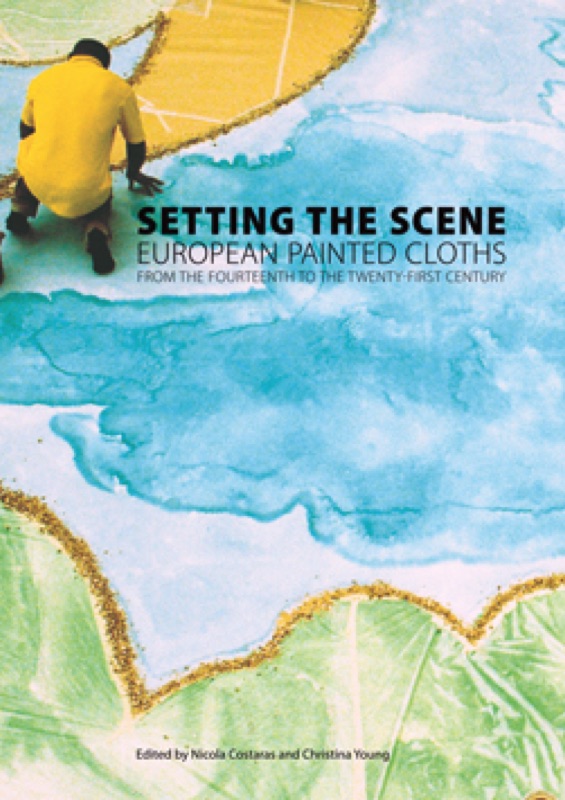The potential for large sizes, portability and versatility for religious objects including banners, hangings, altarpieces and palls was the impetus for the emergence of fabrics as a painting support in Western art in the Middle Ages. The functionality of the works explains the survival of relatively few examples and although painted cloths were the most common form of interior decoration for centuries, they have received less attention from art historians and historians in part due to this poor survival rate.
While painted cloths were once commissioned for court functions, part of an elaborate display of royal power and magnificence, the same methods and materials continued to be used for scenic cloths.
The papers in this volume explore the use of painted cloths in religious ceremony, pageantry, domestic interiors and scenic art, focusing on their change of context and significance from the fourteenth to the twenty-first century and examining their different function, materials and method of creation.
You can have a look inside the book here
Foreword
Nicola Costaras and Christina Young
Introduction
Maurice Howard
Religious and secular
Cloths in and on paintings: from curtain to shutter and back again
Roland Krischel
The use of painted cloths in London civic pageantry in the fourteenth and fifteenth centuries
Nicola Coldstream
The ownership of painted cloths in late medieval England
Nicola Costaras
Domestic interior
The painted cloths at Owlpen Manor, Gloucestershire
Nicholas Mander
Painted cloths in late medieval London houses
Katherine L. French
‘Shall by a painted cloth be kept in awe’: Shakespeare’s narrative textiles
Rebecca Olson
A Chinese room in decay: history and conservation
Jorien Jas
From foot-cloth to petticoat: the British uses of Indian chintz ca. 1700
Sylvia Houghteling
Pageantry and ceremony
The trade and import of painted cloths in fifteenth- to sixteenth-century London
Jo Kirby
A technical study of a late fourteenth-century double-sided processional banner by Spinello Aretino
Sarah Kleiner
The Legend of St Bruno and painting cycles on canvas in late fifteenth-century Cologne
Katja von Baum
Painted cloth and the transformation of Seville Cathedral for the 1671 festivities of the canonization of Saint Ferdinand III
Sing d’Arcy
Scenic art
The changing practice of scenic painters in England
Hilary Vernon-Smith
The changing role of English scenic artists
Christina Young
Normansfield Theatre scenery: materials and construction revealed through conservation
Karen Thompson and Frances Lennard
Paintings for performance: theatre cloths in the collections of the Victoria and Albert Museum, London and the Royal Pavilion, Art Gallery and Museums, Brighton
Jane Pritchard
The book is simple, well presented and interesting and helps to establish painted cloths as more than ephemeral objects. The diverse set of essays highlight the longevity and value expected of painted cloths despite their rarity. The book presents the current practice of using paint media and textile substrates, underlining the fact that painted textiles will continue to be part of current and future society.
ICON News - March 2014
